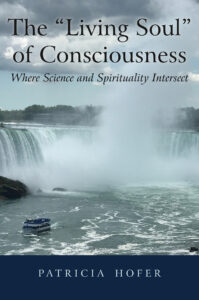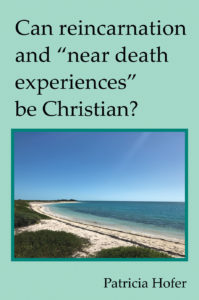Patricia Hofer
CS Lewis’ 4 strands of religious development
CS Lewis, The Problem of Pain: “In all developed religion we find three strands or elements, and in Christianity one more. …Drawing from Rudolf Otto’s research, CS Lewis calls the 1ST STRAND in religious development “numinous awe.” Lewis writes, “Suppose you were told there was a tiger in the next room you would know that you were in danger and would probably feel fear. …Now suppose that you were told simply ‘There is a mighty spirit in the room,’ and believed it. …You would feel wonder and a certain shrinking—a sense of inadequacy to cope with such a visitant …This feeling may be described as awe, and the object which excites it as the Numinous. … it seems therefore probably that numinous awe is as old as humanity….when man passes from physical fear to dread and awe, he makes a sheer jump, … The Numinous is not the same as the morally good, and a man overwhelmed with awe is likely, if left to himself, to think numinous object ‘beyond good and evil.’ (Problem of Pain, introduction)
CS Lewis then describes the “SECOND STRAND” or element in religion: “All the human beings that history has heard of acknowledge some kind of morality…the experiences expressed by the words ‘I ‘ought’ or ‘I ought not.’ …Morality, like numinous awe, is a jump’ …The second element in religion is the consciousness not merely of a moral law, but of a moral law at once approved and disobeyed.” (Problem of Pain, introduction)
CS Lewis then wrote: “The THIRD STRAND in religious development arises when men identify them—when the Numinous Power to which they feel awe is made the guardian of the morality to which they feel obligation. Once again that may seem to you very natural. …But it is not in the least obvious. … The actual behavior of that universe which the Numinous haunts bears no resemblance to the behavior which morality demands of us. (Problem of Pain, introduction)
CS Lewis then added a “FOURTH STRAND…a historical event”: “There was a man born among these Jews who claimed to be, or to be the son of, or to be “one with’, the Something which is at once the awful haunter of nature and the giver of the moral law.”…Christianity is not the conclusion of a philosophical debate on the origin of the universe: it is a catastrophic historical even following on the long spiritual preparation of humanity which I have described.” (Problem of Pain, introduction)
CS Lewis then describes the “SECOND STRAND” or element in religion: “All the human beings that history has heard of acknowledge some kind of morality…the experiences expressed by the words ‘I ‘ought’ or ‘I ought not.’ …Morality, like numinous awe, is a jump’ …The second element in religion is the consciousness not merely of a moral law, but of a moral law at once approved and disobeyed.” (Problem of Pain, introduction)
CS Lewis then wrote: “The THIRD STRAND in religious development arises when men identify them—when the Numinous Power to which they feel awe is made the guardian of the morality to which they feel obligation. Once again that may seem to you very natural. …But it is not in the least obvious. … The actual behavior of that universe which the Numinous haunts bears no resemblance to the behavior which morality demands of us. (Problem of Pain, introduction)
CS Lewis then added a “FOURTH STRAND…a historical event”: “There was a man born among these Jews who claimed to be, or to be the son of, or to be “one with’, the Something which is at once the awful haunter of nature and the giver of the moral law.”…Christianity is not the conclusion of a philosophical debate on the origin of the universe: it is a catastrophic historical even following on the long spiritual preparation of humanity which I have described.” (Problem of Pain, introduction)


Leave a Reply